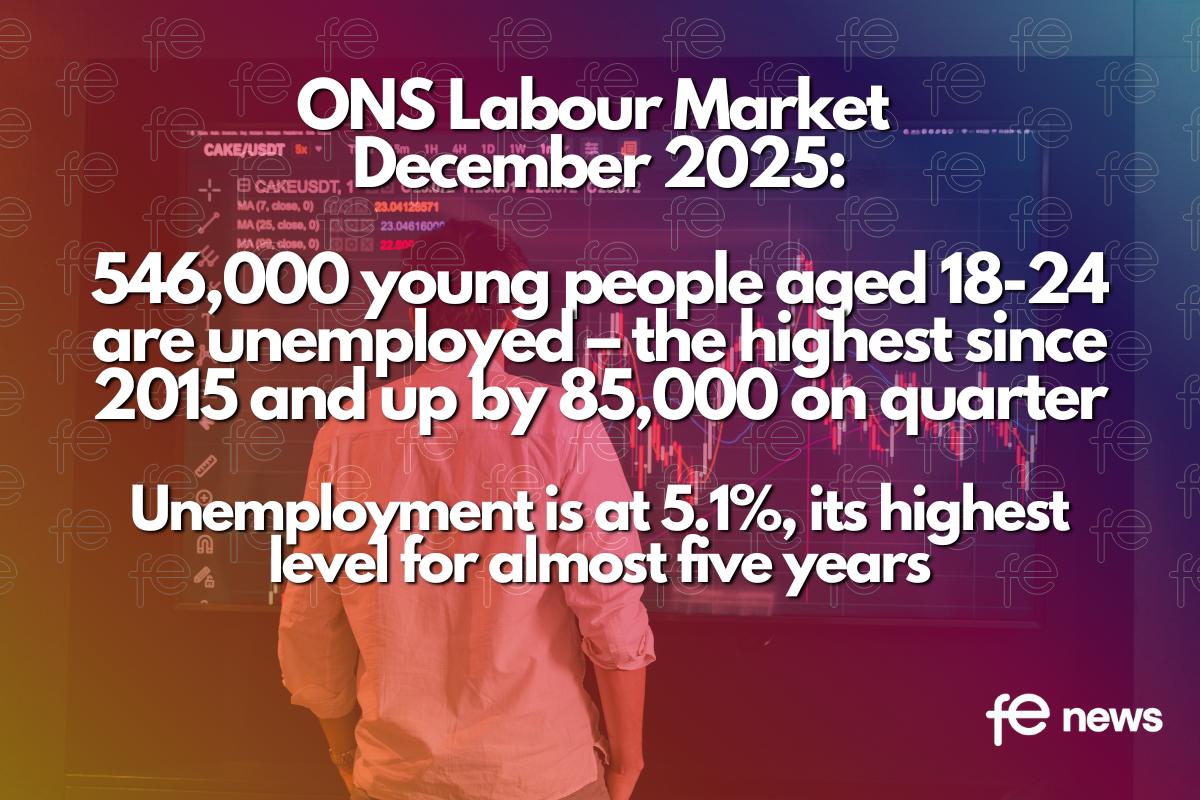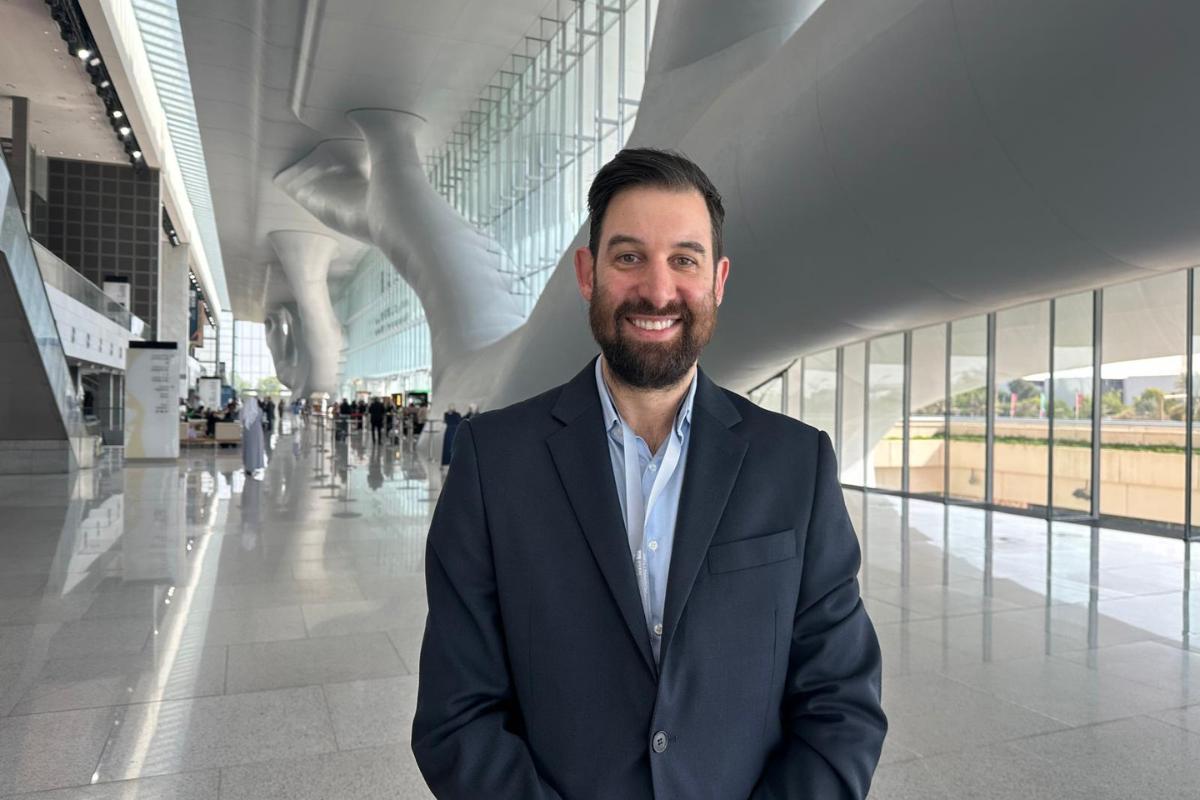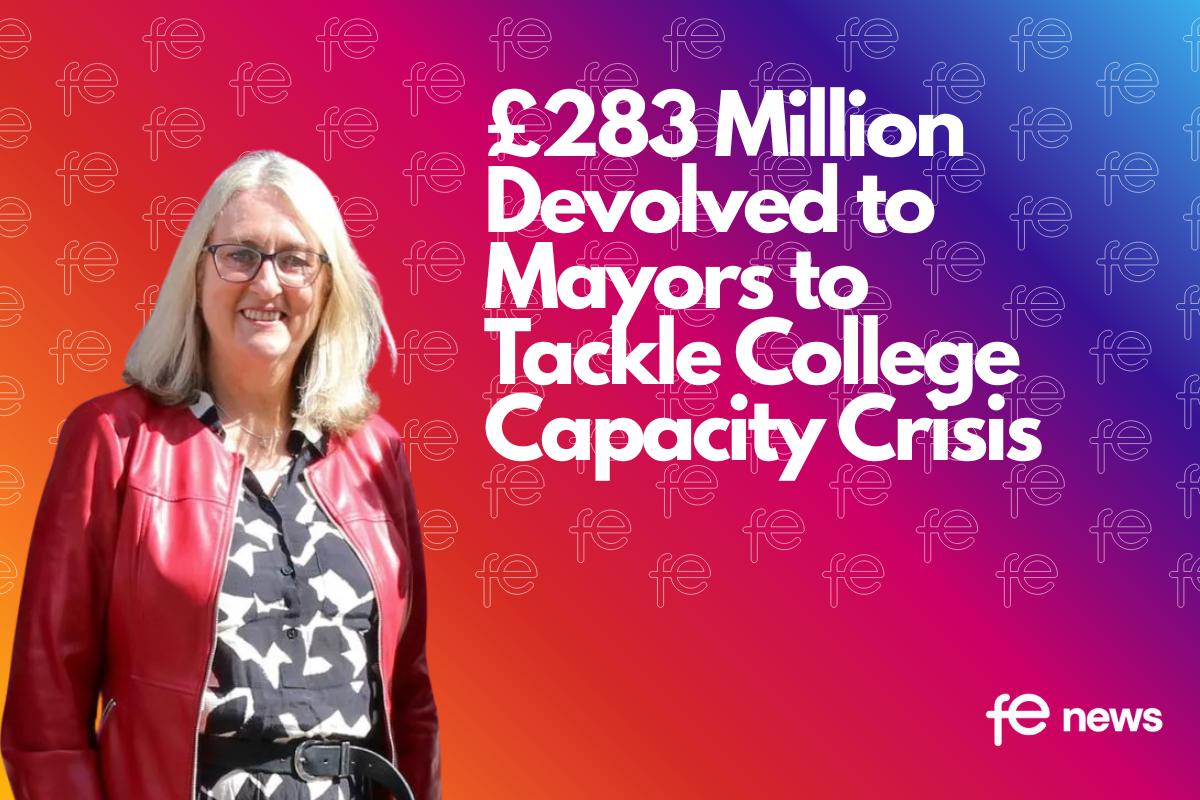How to unleash the talent already in your college

The hard yards of transformation
Don’t assume that new levels of performance will always mean new staff. Leaders should look to unleash and grow the talent of colleagues already in the organisation.
It is always easy for leaders – particularly those who are newly appointed – to assume that to change the performance, they will need to change the people.
At senior levels,some changing of the guard is inevitable.As they go through their particular version of the baselining and strategy-setting process, leaders will want to consider whether they have the senior team they’ll need around them to deliver the transformation.
Likewise, members of their senior team often use the appointment of a new chief executive as a spark for reflection. The thing I am far more interested in here is the mindset and approach that leaders take with respect to colleagues beyond the senior team.
As I talked about in Chapter 5, engaging with colleagues openly, authentically and substantively about the organisation’s higher purpose can be both cathartic and energising for colleagues at all levels.
It can start the healing process by bringing colleagues together around the thing they, very likely, have in common: their affinity for the work that the organisation does for students, businesses and the communities they serve.
Likewise, the articulation of a ‘good strategy’ should provide colleagues with a clear sense of the approach that the organisation is taking to its improvement effort – helping them take good operational decisions on a day-to-day basis which support, not thwart, that effort.
This element is particularly important for mid-level managers.Their development into a pool of what Quinn andThakor call ‘purpose-driven leaders’will likely be the defining development in the transformation journey as a whole.
Midlevel managers typically hold the organisation’s disaggregated performance improvement goals in their job descriptions. It is pretty much impossible to improve performance without them.
Only when this group is engaged, enthused, empowered and confident in their ability to make operational decisions consistent with the organisation’s overall strategy and purpose will the transformation really pick up pace.
I strongly endorse Quinn and Thakor’s prescription on this point. Leaders’ authentic, constant engagement with this group is perhaps the most important leadership investment they will make – and one of the most important roles they will personally play in the transformation.
Zaffron and Unruh’s description of the organisation as a network of conversations is also deeply relevant here. Leaders’willingness to engage, consult and help guide colleagues as they connect their day-to-day work with the organisation’s purpose and strategy is critical to the transformation effort.
As Quinn and Thakor note, strengthening that connection helps colleagues rethink their daily tasks and perform them to a new standard. All of the above is about flipping the presumption and assuming that you can unleash and grow the talent of colleagues already working in the organisation – rather than assuming that new performance always and necessarily means new people.
Turnover is always disruptive, not without costs and can often be harmful and destabilising for the organisation and colleagues who work in it. Leaders should, therefore, aim to transform with the lowest possible level of staff turnover – even if that transpires to be substantial turnover in the short-term.
This approach will require a substantial investment in staff development – whether to address capability and performance gaps and/or to help colleagues familiarise themselves with the particular expectations, approaches and tools the organisation has settled on to drive its transformation.
This should be a structured, sustained and multi-faceted programme which addresses organisational, departmental and individual areas for improvement.
Barber’s public value framework (see Chapter 4) highlights the importance of a workforce strategy linked to service delivery goals and identified performance issues; likewise,‘people’ is one of the IPA’s seven lenses of transformation.
One of the most pleasing aspects of the HLG transformation, from my perspective, was the number of managers with whom I shared the whole journey.Their engagement, enthusiasm, passion for the organisation and its improvement journey inspired me.
Their willingness to think differently, try new things and aim high in everything we did was the defining factor in our improvement. Several in that group were unrecognisable in their performance from my first day to my last. I attribute all credit for that change to them.
They took advantage of the environment we created together to develop themselves and their teams.
They take full credit for one of the most complimentary quotes in our Ofsted report:
“As a result of inspirational leadership, there has been a substantial and positive impact on the culture of the college and a rapid improvement in the quality of teaching, learning and assessment…. Senior leaders have ensured good communications at all levels in the college and have developed a culture of trust and respect. Consequently, staff feel respected and valued. They contribute effectively by using their expertise to improve the quality of provision and outcomes for learners.”
Leaders must provide colleagues with a clear, simple architecture which helps them translate purpose, strategy and transformation into improved performance.
I talked in Chapter 1 about the incredibly complicated, constantly changing and challenging operating environment in which colleges work. In defining purpose,setting, maintaining and delivering strategy, leaders must make sense of that environment and judge what to engage with, when and how.
That’s an incredibly difficult task – particularly in a college that’s on a transformation journey. The last thing you need when you’re trying to transform organisational performance is for the goalposts to move or, worse, for the rules of the game change altogether.
The reality of the further education sector is that leaders should presume movement of goalposts and substantive rule changes during the life of their transformation journey.
Those starting the journey in 2019 will very likely (who can say for sure) need to implement T levels at some point before their transformation is complete. And who would bet against material adjustment in the apprenticeship reform programme, too?
Just as they need to make sense of the external environment in setting strategy for the organisation, so leaders also need to help colleagues make sense of both the external and internal environment throughout the transformation period.
External change can be a source of concern and confusion for colleagues:
- Does a change in the external environment mean the organisation’s strategy is about to change?
- Is the organisation under new and existential threat?
- Are our transformation plans invalid, or about to change?
With respect to the external environment, I tend to think about leaders creating umbrellas under which colleagues can confidently get on with the task in hand – without worrying too much about the latest change in policy, funding or local politics.
Perhaps because my particular background was in policy-making rather than teaching and learning, I saw it as my job at HLG to take care of external and corporate business so that my colleagues could stay focused on our transformation task.
I very rarely asked curriculum colleagues to engage with anything other than pieces of work that would improve curriculum performance.
One of the best examples of the need for such an umbrella was, of course, the area review process. The risk of organisational distraction was great; my tolerance for it was limited to say the least.
I was critically clear with colleagues that I thought the area review was something for the company secretary, finance director and I to take care of – while others assumed that the process would not have material implications for us (which was fairly certain to be the case, given the outcome of earlier reviews in the process, and local partner perspectives).
I could not afford to have colleagues distracted by the process when we had a college to transform – and I wasn’t prepared to lower my expectations of the transformational progress they delivered because of the area review.
There is a hard edge here: if senior leaders provide their operationally focused colleagues with umbrellas which protect them from the external weather, they should expect performance from those colleagues which is reflective of the relative stability they have created for them.
The sort of open, authentic and constant engagement described above is clearly an important factor here. It is one thing for leaders to make sense and take care of the external environment so that others can get on with the transformation task. It is another for colleagues to trust their leader to do that both well and in good faith.
In many ways, the more challenging task for leaders is to communicate with colleagues about the transformation itself in ways that make sense to them, which help them engage with it and play their part in its success.
Recall from Chapter 4 the McKinsey survey in which 90 per cent of respondents said that the transformation they were involved in would have benefited from more engagement with front-line employees; and the IPA’s seven lenses which talked about the need for:
- A compelling picture of the future (purpose and strategy);
- A clear view of how different components of the transformation will fit together to deliver the whole; and,
- A roadmap which identifies the sequencing of and interdependencies between different components of the transformation.
It follows from the common issues described in Chapter 3 and approach to strategy described in Chapter 4 that the transformation is likely to be a large, multi-faceted piece of work.
If colleagues are going to engage with and contribute to a successful transformation, leaders need to communicate the blueprint in ways which enable them to understand, challenge and translate transformational imperatives into their daily work.
This requires that leaders develop a means of communicating about the transformation in ways that colleagues at all levels can readily understand and relate to – including crucially what it means for them, their role and their work in the organisation. In my and others’ experience, this is about creating very simple, likely very visual,summaries of the transformation programme which can be used as communication tools.
It is also about the way in which leaders lead, communicate and engage with colleagues at all levels.The sort of purpose-led engagement described by Quinn and Thakor and the reality of the organisation as a network of conversations described by Zaffron and Unruh give leaders the opportunity to help their colleagues really understand the transformation programme and what it means for them – precisely because of the open, authentic, formal and informal engagement which leaders are prepared to invest in.
Another crucial factor here is the role of middle managers, touched on earlier in this chapter. Given their operational responsibilities, this group is absolutely critical to the success of the transformation; their understanding of and engagement with it should therefore be amongst leaders’ highest priorities throughout the transformation process.
Large, complex and dynamic organisations and transformation programmes require proper programme management and operating excellence approaches, led from the corporate centre.
I see huge benefits from the proportionate application of programme management and operational excellence approaches in each of these areas – and real risks if they are not embraced.
I am interested in programme management and operational process management techniques from four perspectives:
- First, the way in which the transformation roadmap is devised and driven;
- Second, the way in which leaders manage the overall business cycle;
- Third, the way in which performance and accountability arrangements operate; and,
- Fourth, the way in which curriculum improvement is managed.
1. Using programme management techniques to devise and drive the transformation roadmap
We saw in Chapter 3 that Ofsted often criticises a lack of progress since the previous inspection and a lack of focus on areas for improvement. In Chapter 4, Barber’s work on public value talked about the importance of ‘pursuing goals’ and ‘managing inputs’ – including the ways in which resources are allocated and progress monitored.
The IPA’s seven lenses framework is also clear on the importance of understanding how different components of a given transformation will be configured to deliver the vision, and on the need for a detailed roadmap which sequences and identifies interdependencies between different aspects of the transformation programme as a whole.
And McKinsey argued that ‘cadence and coordination in delivery’ is one of five disciplines which, if applied, can multiply the prospects of transformation success by more than threefold.
I needed none of the above evidence to convince me that transformations need to be properly planned and monitored using proportionate programme and project management techniques; I can’t imagine trying to deliver a large, long, complex, wholeorganisation programme of work without the comfort of a programmatic environment.
When I joined the civil service as a green graduate trainee in 2003, programme and project management techniques were just being introduced; indeed, I developed the programme plan for the 2003 skills white paper.
By the time I left the Civil Service in 2009,such techniques were well-embedded as a means of managing all manner of different types of work – whether policy development, implementation or transformation.
I learned much more about the potential of programme management during my time at PwC, where pretty much all client assignments would be planned and managed using programme management techniques; likewise in Capita, where the scale of some programmes could be quite staggering.
Others I spoke to in preparing this piece, who have experience of programme management techniques from either within or beyond the further education sector,share the view that transformations should be devised and monitored through the proportionate application of programme management techniques. I say ‘proportionate’ advisedly.
I have worked with some incredibly skilled, experienced and professionally qualified programme management experts – including a wonderful band of experts in PwC who learned their trade in the armed forces – none of whom think that the right answer is to throw the full programme management toolkit at every piece of work. Great programme managers use the right tool to deliver in the organisational context in which they’re working.
For me that means that transformations should be supported, at least, by:
- A simple, high-level critical path which shows the sequencing and interdependencies between fundamental elements of the transformation programme over time.
- A more detailed plan setting out the series of deliverables which, by workstream and taken together, will deliver the critical path and transformation;
- An action, issues and risk log covering the whole programme.
It is very likely that the programme will consist of a series of smaller, discrete projects focused on particular aspects of the transformation; each should, in my experience, use the same tools. Indeed, I tend to advocate the preparation of a corporate programme management toolkit which colleagues can use both on transformation pieces of work and others – which will happen as colleagues see the benefits of working in this way.
2. Using programme management techniques to manage the business cycle
Colleges are, for the most part, wonderfully cyclical organisations. The same things happen, at broadly the same time, every academic year:
- student recruitment campaigns,
- enrolment and induction;
- progress reviews,
- assessments and exams;
- data and financial returns to the ESFA and other funding partners;
- business planning for the following year.
There’s an established, predictable rhythm to an academic year in most parts of a further education college. Even in parts of the organisation which don’t quite march to the beat of the academic year – like apprenticeship operations which should recruit throughout the year – governance and accountability arrangements tend to align with the academic calendar.
The risk which comes with any long-established annual cycle such as this, is that colleagues fall into the trap of doing what they did last year again and again – without reviewing and looking for improvements before they move into year n+1.
The opportunity is to do the opposite, i.e. to programme manage each year as a new ‘version’ of the organisation – testing and looking for improvements in all areas before permitting a given thing – whether a policy, process, course or session plan – to become part of the n+1 year’s operation.
We’re all well used to seeing our technology providers do this now, through the release of different versions of their products and operating systems; why not take the same approach to improvement in colleges?
Throughout my time at HLG, I became more and more interested in the benefits of positing a gateway between one year and the next to punctuate an improvement cycle and to make sure that our policies, processes and resources kept pace with the progress of our transformation – recognising that not all of our improvements would be made in one giant leap.
I began to think in terms of annual version control, i.e. the 2017/18 version of our approach to curriculum assurance and improvement. Many colleges will do this under the banner of their selfassessment and quality improvement planning processes.
We saw in Chapter 3 that Ofsted commonly criticises self-assessment in poorly performing colleges – and the rate of progress that colleges are making. I, and others I spoke to in preparing this piece, found that the sort of rigour, relentlessness and sharpness I am describing here helped us deliver real year-on-year improvements – and in areas beyond curriculum. Including corporate service areas in the annual improvement cycle is critical, given the importance of the whole-organisation environment to the improvement effort.
The cycle may look slightly different in those areas – perhaps with team plans and improvement projects rather than self-assessment reports and quality improvement plans – but the net position should be the same: defined, managed and measured annual improvement.
3. Using programme management approaches to support accountability and performance management
We saw in Chapter 3 that both Ofsted and the FE Commissioner commonly take issue with leadership, governance and accountability arrangements in poorly performing colleges. They also often raise concerns about data not being properly used to understand and drive performance improvement.
We also saw that McKinsey placed great emphasis on ‘cadence and coordination in delivery’,‘ensuring ownership in the line’ and on ‘executing relentlessly’ – all of which resonate strongly for me and others I spoke to in preparing this piece.
The sector – and the department – has been very excited about governance for several years. The role governors should play, the visibility they have over the organisation’s work, and the ways in which they engage with colleagues and students are all incredibly important – holding the executive to account for progress and providing great advice at one remove from the daily grind of the transformation.
In this piece, though, I am more interested in executive-level performance management and accountability arrangements: how they can help leaders to build a culture of high-performance expectations; establish and maintain clear accountabilities; and create a forum for discussion which supports timely, focused action to drive sustained performance improvement.
I see huge potential for clear,simple and focused arrangements to help drive transformations. I will talk later in this chapter about the role that data and insight should play in performance management – including particularly the importance of there being a ‘single version of the truth’.
Suffice to say for now, that timely and accurate data is essential to any performance discussion; indeed, it is often barely worth having the discussion without the data. I have on many occasions preferred to postpone by 24 or 48 hours whilst colleagues bring together a data set which can carry the weight of the discussion which needs to take place.
There is a risk that in large, complex and changing organisations, meetings and reports spread like wildfire – each emerging for justifiable reasons in response to a particular need for focus on a given issue or seam of work.
The likely result of this common phenomenon is treacle; colleagues stuck in a cycle of preparing, reading and discussing reports in meetings – leaving precious little time for action.
Some 2017 research found that executives spend an average of almost 23 hours a week in meetings. Of those surveyed:
- 65 per cent said meetings keep them from completing their own work;
- 71 per cent said meetings are unproductive and inefficient;
- 64 per cent said meetings come at the expense of deep thinking; and,
- 62 per cent said meetings miss opportunities to bring the team closer together.
I, therefore, favour the creation of a single, all-encompassing executive-level reporting cycle, facilitated by programme management tools and techniques. Such an approach should:
- Connect the organisation to itself through a pyramid structure which enables colleagues to escalate and cascade information through all levels of the organisation – making sure that all parts of the organisation and all aspects of the transformation are covered.
- Replace the vast, vast majority of other performance and accountability forums in the organisation by covering all aspects of performance in a given area – freeing colleagues time to focus on action, not discussion.
- Bring together the right set of colleagues to have a full, effective discussion of performance in a given area including, for example, curriculum quality and finance colleagues as well as the leaders of a given area of work and the people they report to.
- Provide a forum for advisory, reflective discussion which helps colleagues translate the organisation’s purpose into daily action in their area – as well as necessary hard-edged discussion of current priorities, performance, issues and risks.
Supporting this sort of approach with a single,simple, concise and comprehensive reporting template – which can be used at most, if not all, levels in the reporting pyramid – is crucial; it serves as a helpful prompt to ensure that all relevant areas are covered every month.
Likewise, the maintenance of action, issues and risk logs for each area helps ensure that the outcome of each discussion happens – and creates an audit trail which is not unhelpful when Ofsted and others are looking for evidence of systematic, focused improvement action.
I was surprised at how readily senior and middle managers in HLG embraced this sort of approach; rather than seeing it as a cumbersome, bureaucratic reporting regime they welcomed – at least they told me they did! – the clarity it brought to our accountability arrangements, the forum for discussion it created and the number of other meetings it replaced or made unnecessary given its introduction.
As the process matured, I came to see it as the real engine of our transformation.
4. Using programme management techniques to support curriculum improvement
As I begin to discuss the fourth way in which I think programme management techniques can be applied to the transformation of a further education college, I should be clear that I am no kind of programme management junkie.
My tendency toward the strategic, creative and next thing can make me something of a nightmare for whoever holds the programmatic reins in the organisations I lead – which is precisely why I am always so keen to invest in such approaches; they create a structured,semi-constant playing field for me and others to work within.
Comfortably the most interesting and enjoyable piece of work we did at HLG was to apply programme management and process excellence techniques to the regime we put in place to drive curriculum performance improvement.
As our improvement gathered momentum, we began to encounter the abovementioned risk of proliferation and fragmentation, i.e. that our approach to improvement consisted of too many distinct elements, the relationships between which were not sufficiently clear – either to those of us who had architected the approach or, more importantly, those who we were asking to engage with and deliver elements of it.
I talked in Chapter 4 and earlier in this chapter about the importance of a clear,simple and communicable framework for the transformation; nowhere is this more important than in relation to the core of the core business of the organisation – curriculum.
We created what programme management and operations colleagues in other sectors would recognise as a standard operating procedures manual, i.e. a set of detailed,step-by-step guidelines which help colleagues carry out often-complex tasks and processes in an efficient, effective and consistent way.
It described each of our curriculum management and improvement processes including:
- Their purpose, described in the context of our overall purpose and improvement goals;
- A summary of how each worked, step by step;
- Their interdependence with other improvement processes and activities; and,
- The accountabilities which related to each.
Though difficult and at times painful, the process through which we put the manual together helped us to refine many of our processes and policies; build understanding and engagement amongst middle managers; and, crucially, frame each in the context of our overall purpose and transformation goals – building the sort of engagement and momentum which Quinn and Thakor described in Chapter 4.
Blending colleagues’ curriculum expertise with that of others who had spent most of their careers in very different sectors and operating environments was, for me, the fulfilment of the vision which inspired me to become a college principal in the first place – the combination of expertise from different areas to do the business of a college better.
Matt Hamnett, Director, MH+A
Over the next few weeks FE News will be publishing this research in full, and FETL will be hosting a webinar with Matt on the report later in February.
Chapter One: The further education operating context is incredibly tough / The introduction of T levels
Chapter Two: College performance compared to other sectors
Chapter Three: The 5 causes of poor performance in FE
Chapter Four: Seven lenses of transformation for FE / FE Can Learn From The Success Of Other Sectors
Chapter Five: Good Strategy Is Crucial For FE Transformation / Policy Cycle Blights FE: Colleges Leaders Should Chart Their Own Course
Chapter Six: How to unleash the talent already in your college / Aligning organisational purpose, strategy and transformation priorities with available funding
Chapter Seven: Leading the transformation in FE











Responses